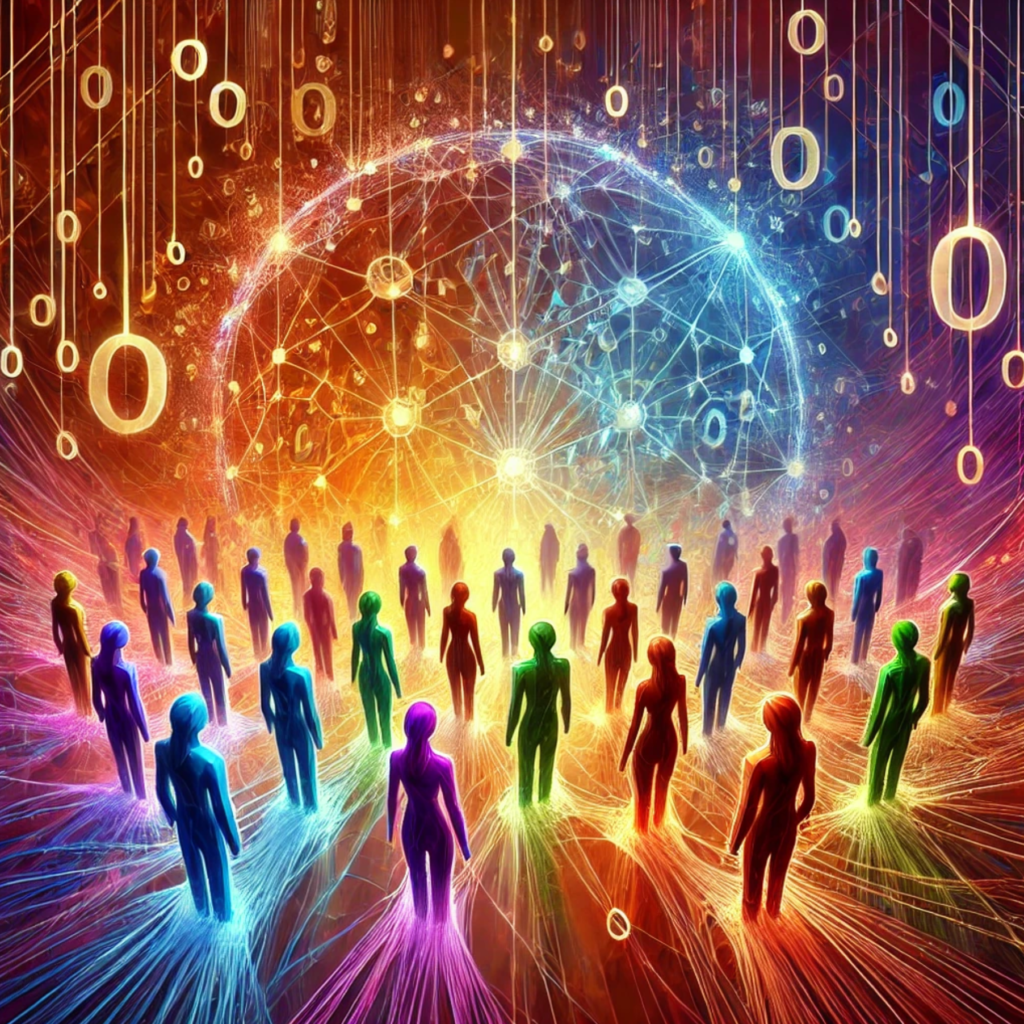Human beings’ tendency to dichotomize—dividing concepts, groups, or ideas into binary opposites—can be analyzed through the lenses of social constructionism, conflict theory, and relational theory. While the first two perspectives explain how and why dichotomies emerge, relational theory provides a framework for moving beyond these divisions and highlights the necessity of doing so.
Social Constructionism Perspective
Social constructionism suggests that much of our understanding of reality is created through social interactions and cultural norms. Dichotomization often arises as a way to organize and simplify complex realities, enabling societies to maintain order and shared understanding.
- Simplifying Complexity
Dichotomies help humans navigate the world by offering clear boundaries and categories. For example, binary notions of gender as male and female simplify diverse identities into recognizable frameworks. However, this oversimplification excludes those who do not conform, marginalizing entire groups. - Cultural Norms and Language
Societies embed dichotomies into cultural norms and language, perpetuating them across generations. Religious binaries like good versus evil or moral versus immoral are institutionalized through education and storytelling, shaping collective values and behaviors. - Identity and Belonging
Dichotomies also serve as tools for identity formation. By defining ourselves in opposition to others—“us” versus “them”—we create group solidarity. While this fosters belonging, it also risks exclusion and conflict with those deemed “other.”
Conflict Theory Perspective
Conflict theory focuses on power dynamics and the struggle for resources, emphasizing how dichotomization serves as a tool for domination and control.
- Division as a Strategy
Dominant groups often emphasize dichotomies—such as rich versus poor or dominant versus marginalized races—to divide and weaken potential resistance. By fostering competition among oppressed groups, they prevent solidarity. - Justifying Inequality
Dichotomies are frequently presented as natural or inevitable to legitimize hierarchies. For instance, racial binaries have historically been used to rationalize slavery and systemic discrimination, portraying one group as superior. - Perpetuating Power
Institutions like media, religion, and education reinforce dichotomies to maintain the status quo. By framing issues as binary—such as capitalism versus socialism—alternative perspectives are marginalized, preserving existing power structures.
Relational Theory Perspective
Relational theory shifts the focus from separation to interconnectedness, offering a pathway to move beyond dichotomization. It emphasizes relationships as fundamental to human development, highlighting the need to transcend binaries and embrace complexity.
- Understanding Interdependence
Relational theory posits that humans are inherently relational beings, shaped by dynamic connections with others. Dichotomization obscures this interdependence, fostering division instead of collaboration. For example, the binary of individual versus collective overlooks how personal and societal growth are deeply intertwined. - Breaking Down Binaries
Moving beyond dichotomies requires recognizing them as socially constructed and often arbitrary. Categories like male/female or rich/poor are not immutable truths but reflect specific cultural and historical contexts. A relational perspective challenges us to see these divisions as fluid and overlapping rather than fixed and oppositional. - Promoting Inclusivity
Embracing relationality encourages inclusivity by acknowledging the value of diverse perspectives and experiences. For instance, recognizing gender as a spectrum rather than a binary fosters greater acceptance and equity for nonbinary and transgender individuals. - Facilitating Dialogue and Collaboration
Dichotomies hinder meaningful dialogue by framing issues in oppositional terms. A relational approach emphasizes mutual understanding and co-creation, enabling people to address complex challenges collaboratively rather than through polarized conflict.
Why Moving Beyond Dichotomization is Necessary
- Reducing Division and Conflict
Dichotomies create “us versus them” mentalities, fueling division and hostility. Moving beyond these binaries fosters unity and cooperation, essential for addressing global challenges such as climate change, inequality, and political polarization. - Acknowledging Complexity
The world is rarely black and white. Reducing complex realities to simple binaries limits our understanding and stifles progress. A relational perspective encourages us to embrace nuance, fostering more innovative and inclusive solutions. - Enhancing Personal and Collective Growth
Recognizing interdependence enables individuals and communities to grow together. By breaking down artificial barriers, we can build networks of mutual support that empower everyone to thrive. - Aligning with Shared Humanity
Ultimately, transcending dichotomies reflects a deeper truth: that human beings are far more connected than divided. Embracing this interconnectedness allows us to build societies rooted in empathy, equity, and collaboration.
Conclusion
Social constructionism and conflict theory help explain why humans dichotomize, revealing that these divisions arise from a combination of cognitive tendencies, cultural norms, and power dynamics. That said, relational theory offers a way forward, emphasizing the importance of interconnection and collaboration. By moving beyond binary thinking, we can reduce conflict, embrace complexity, and foster both individual and collective growth. This shift is essential for creating a more equitable and inclusive world.

